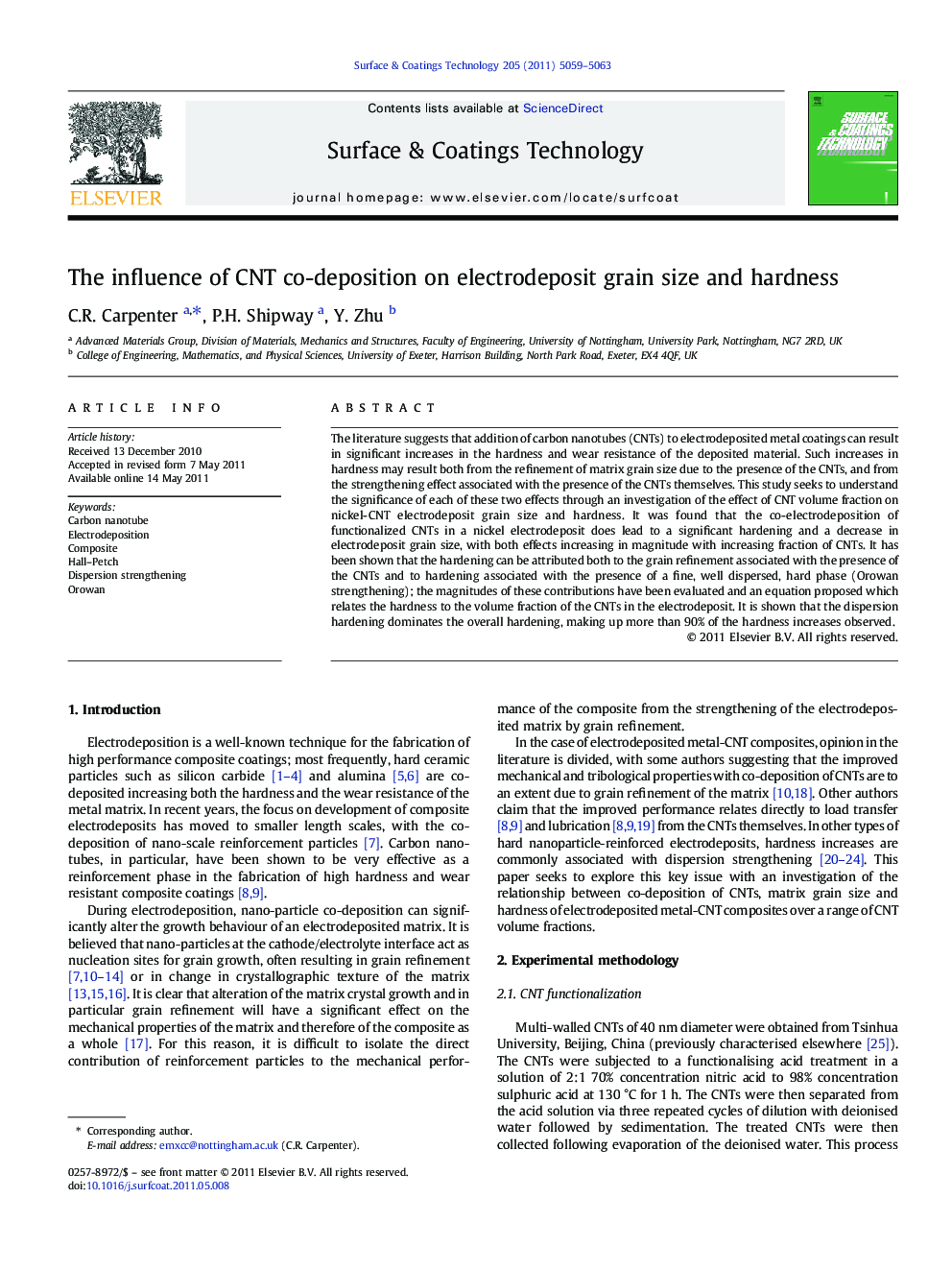| Article ID | Journal | Published Year | Pages | File Type |
|---|---|---|---|---|
| 1658550 | Surface and Coatings Technology | 2011 | 5 Pages |
The literature suggests that addition of carbon nanotubes (CNTs) to electrodeposited metal coatings can result in significant increases in the hardness and wear resistance of the deposited material. Such increases in hardness may result both from the refinement of matrix grain size due to the presence of the CNTs, and from the strengthening effect associated with the presence of the CNTs themselves. This study seeks to understand the significance of each of these two effects through an investigation of the effect of CNT volume fraction on nickel-CNT electrodeposit grain size and hardness. It was found that the co-electrodeposition of functionalized CNTs in a nickel electrodeposit does lead to a significant hardening and a decrease in electrodeposit grain size, with both effects increasing in magnitude with increasing fraction of CNTs. It has been shown that the hardening can be attributed both to the grain refinement associated with the presence of the CNTs and to hardening associated with the presence of a fine, well dispersed, hard phase (Orowan strengthening); the magnitudes of these contributions have been evaluated and an equation proposed which relates the hardness to the volume fraction of the CNTs in the electrodeposit. It is shown that the dispersion hardening dominates the overall hardening, making up more than 90% of the hardness increases observed.
Research highlights► Electrodeposited Ni grain size reduces with the co-deposition of CNTs. ► CNT reinforcement results in significant increase in electrodeposit hardness. ► A small fraction of this increase is due to grain refinement, the majority is due to Orowan strengthening. ► An equation relating hardness of the CNT reinforced electrodeposit to the CNT vol% is proposed.
